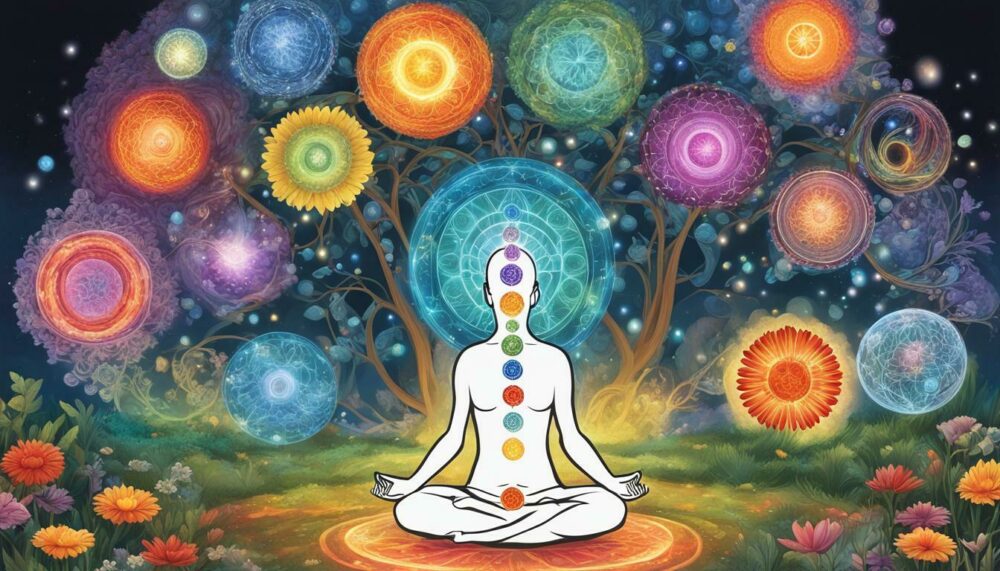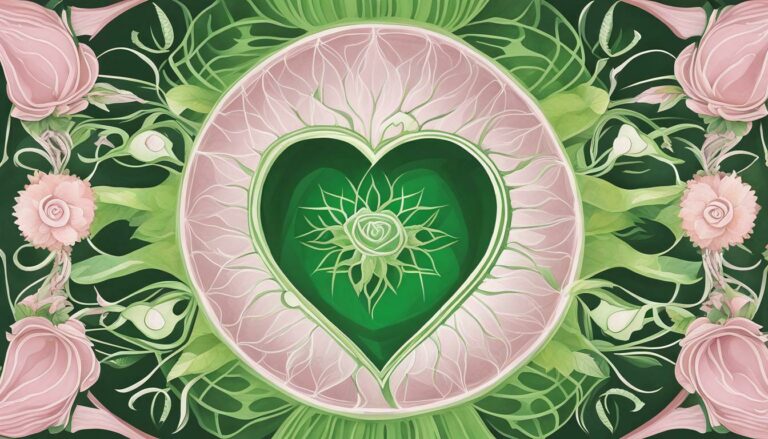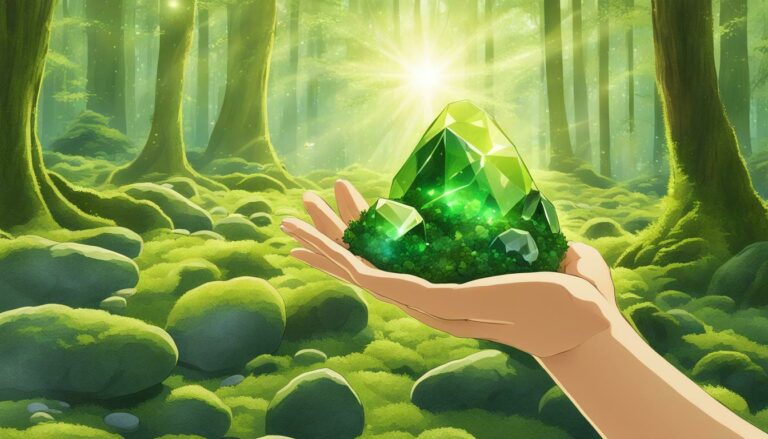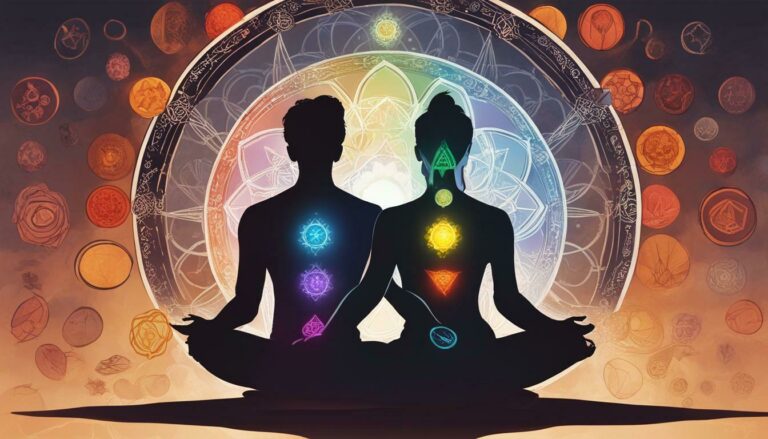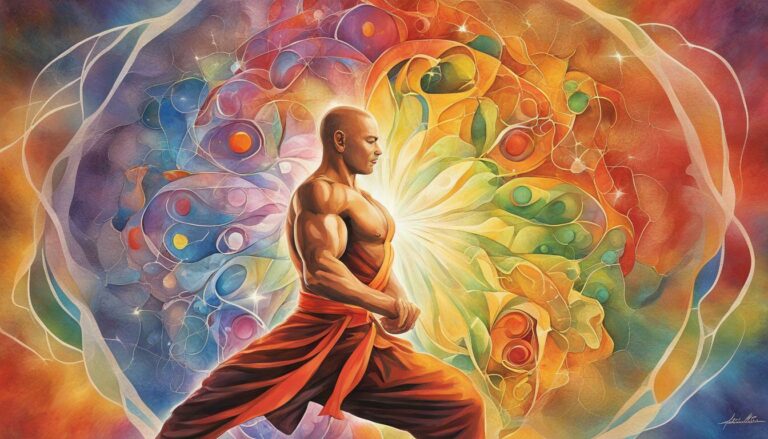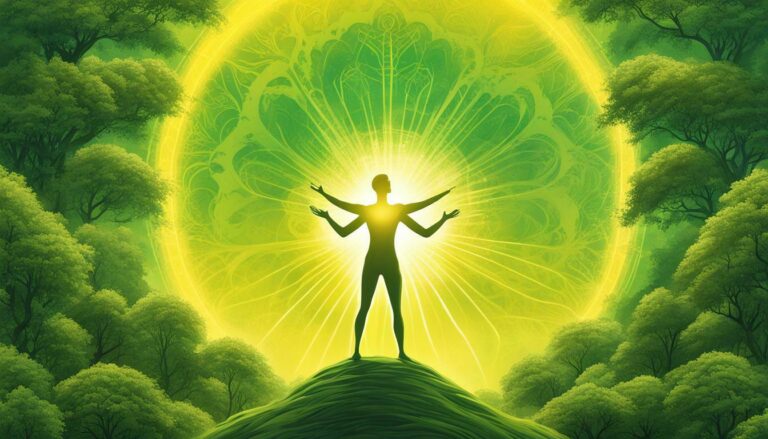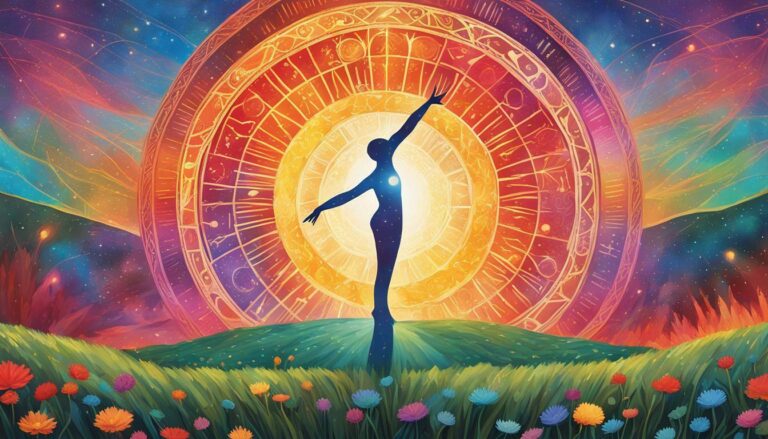Unraveling Mysteries: Who Invented Chakra? Begin Your Journey Now.
Chakra, the concept of spiritual energy centers within the body, has been a topic of fascination and exploration for centuries. But have you ever wondered, who invented chakra? The origins of this ancient practice remain shrouded in mystery, but embarking on a journey to uncover them can be a transformative experience.
Table of Contents
Key Takeaways:
- Chakra is an ancient concept of spiritual energy centers within the body.
- The origins of chakra are still a mystery, but exploring the topic can lead to personal transformation.
- Ancient teachings on chakra, from India and beyond, have had a significant impact on modern interpretations of the concept.
The Concept of Chakra in Ancient Teachings
Throughout history, the concept of chakra has held a significant place in ancient teachings. These teachings describe chakras as spiritual energy centers, located throughout the body, that help regulate physical, emotional, and spiritual well-being. By understanding chakras and their functions, one can achieve a balanced and harmonious existence.
While different ancient traditions have their own unique interpretation of chakras, they commonly identify seven primary chakras. Each chakra is associated with a different color, symbol, and function.
| Chakra | Color | Symbol | Function |
|---|---|---|---|
| Root Chakra | Red | Four-petaled Lotus | Grounding and stability |
| Sacral Chakra | Orange | Six-petaled Lotus | Creativity and sexuality |
| Solar Plexus Chakra | Yellow | Ten-petaled Lotus | Personal power and confidence |
| Heart Chakra | Green | Twelve-petaled Lotus | Compassion and love |
| Throat Chakra | Blue | Sixteen-petaled Lotus | Communication and self-expression |
| Third Eye Chakra | Indigo | Two-petaled Lotus | Intuition and perception |
| Crown Chakra | Purple or white | Thousand-petaled Lotus | Spiritual connection and enlightenment |
The concept of chakra in ancient teachings emphasizes the importance of cultivating a strong spiritual foundation. By aligning chakras and achieving balance, one can enhance their physical health, emotional well-being, and spiritual growth.
Next, we will explore the ancient Indian tradition of chakras, specifically the Hindu concept of chakra and its historical origins, as we continue our journey to uncover the mysteries of who invented chakra.
The Ancient Indian Tradition of Chakras
As you explore the concept of chakras, it is impossible to ignore the significant role they play in the ancient Indian tradition. The Hindu concept of chakra is deeply rooted in Indian spiritual practices and has been studied and refined for centuries.
Chakras are believed to be energy centers within the body that correspond to specific physical, emotional, and spiritual functions. In the Hindu tradition, there are seven chakras, each with its own unique properties and associations.
| Chakra | Location | Associated Function |
|---|---|---|
| Root Chakra | Base of the spine | Grounding and survival instincts |
| Sacral Chakra | Lower abdomen | Creativity and sexuality |
| Solar Plexus Chakra | Upper abdomen | Power and self-esteem |
| Heart Chakra | Center of the chest | Love and compassion |
| Throat Chakra | Throat | Communication and self-expression |
| Third Eye Chakra | Forehead, between the eyes | Intuition and spiritual insight |
| Crown Chakra | Top of the head | Connection with the divine |
The Hindu tradition views chakras as crucial for achieving balance and harmony in the body and mind. Practices such as yoga and meditation are used to activate and balance these energy centers, allowing for the free flow of energy throughout the body.
Additionally, the Hindu concept of chakra has had a significant impact on other spiritual traditions, including Buddhism and Jainism. The influence of the ancient Indian tradition of chakras can be seen globally in various spiritual practices and healing modalities.
The Symbolism of Chakras in Hinduism
Beyond their practical role in achieving balance and harmony, chakras also hold deep symbolic meaning within the Hindu tradition. Each chakra is associated with a specific color, element, and deity, further emphasizing their significance in spiritual practice.
For example, the root chakra is associated with the color red, the element earth, and the deity Ganesha. The throat chakra is associated with the color blue, the element ether, and the deity Saraswati.
By understanding the historical origins and symbolism of chakras in the Hindu tradition, we can gain a greater appreciation for their significance in spiritual exploration and personal growth.
Chakras in Other Spiritual Traditions
While the concept of chakras may be most commonly associated with the ancient Indian tradition, similar concepts exist in other spiritual traditions around the world. From the Chinese system of meridians to the Japanese concept of hara, many cultures have recognized the importance of spiritual energy centers within the body.
In Native American traditions, the concept of “medicine wheels” is used to represent the interconnectedness of all things, including the human body. These medicine wheels are often depicted as circles with lines or spokes representing different aspects of the natural world, including the four cardinal directions, the elements, and the seasons.
The Egyptian culture also recognized the importance of energy centers within the body, known as “sekhem.” These centers were believed to be linked to the gods and were associated with various aspects of life such as health, prosperity, and wisdom.
In the West, the concept of chakras has been adapted and integrated into various spiritual practices and alternative healing modalities. Many contemporary chakra systems draw on Western esotericism, psychology, and holistic techniques to create a more modern and approachable understanding of these energy centers.
Exploring the diverse range of chakra systems worldwide can offer a deeper understanding and appreciation of the spiritual significance of these energy centers. Whether through meditation, yoga, or other spiritual practices, incorporating the concept of chakras into your personal journey can help you achieve greater balance and harmony within yourself and with the world around you.
The Influence of Ancient Philosophers
The concept of chakra has been explored by many ancient philosophers and thinkers throughout history. These individuals have contributed to the development of chakra as a metaphysical and spiritual concept, shaping our understanding of energy and balance.
Ancient Philosophers and Chakra
Plato, the famous Greek philosopher, believed in the existence of energy centers in the body that corresponded with different levels of consciousness. Aristotle, another Greek philosopher, discussed the concept of “prana,” which is similar to the idea of life force energy that flows through the body’s energy channels, known as “nadis.” The Stoics also believed in the existence of energy centers in the body, and their concept of “pneuma” corresponds with the Hindu concept of prana.
Chakra in Philosophical Teachings
Philosophers also explored the significance of chakra in their teachings. The Hindu philosopher Patanjali discussed chakras in his “Yoga Sutras,” emphasizing their role in the practice of yoga. The Chinese philosopher Laozi, known for his teachings on Taoism, discussed the importance of balancing the body’s energy centers, known as “dantians.”
The ideas and teachings of these ancient philosophers have contributed to our understanding of chakra as a concept, emphasizing the importance of energy balance and its impact on overall well-being.
Modern Interpretations and Innovations
As our understanding of spirituality and energy has evolved, so too has the concept of chakras. Modern interpretations have emerged, incorporating influences from Western esotericism, psychology, and alternative healing practices.
One contemporary chakra system is the seven-chakra model, which is based on the Indian tradition but has been adapted to suit modern understanding. In this system, each chakra is associated with specific physical and psychological attributes and can be balanced through various techniques such as yoga, meditation, and Reiki.
Another modern interpretation is the twelve-chakra system, which expands on the traditional seven-chakra model by incorporating additional energy centers in the body. This system is often used in New Age spirituality and emphasizes the importance of spiritual growth and transformation.
Contemporary chakra systems have also been influenced by psychology, with some practitioners using chakras as a framework for exploring emotional and mental health. In this approach, each chakra is associated with different psychological functions, such as creativity, communication, and intuition, and can be used as a tool for personal growth and self-awareness.
Finally, alternative healing practices have incorporated chakras into their methodologies as a technique for promoting physical and emotional well-being. involves identifying imbalances in the chakras and using various techniques to restore balance and harmony.
Overall, modern interpretations and innovations in chakra systems continue to evolve as our understanding of spirituality and energy deepens. By incorporating these concepts into your own spiritual exploration, you can find inner balance and harmony.
The Quest for the Inventor of Chakra
Are you ready to embark on a journey of discovery? The quest for the inventor of chakra is a fascinating exploration of ancient wisdom and spiritual practices. Many theories and speculations exist regarding the historical origins of chakra, and the quest to unravel its mysteries continues to this day.
Some believe that chakra has its roots in the ancient Hindu tradition, where it has been recognized and studied for thousands of years. Others speculate that the concept of chakra is universal, with similar energy centers recognized in other spiritual traditions around the world.
Historical records suggest that chakra has been an integral part of spiritual practices and philosophies from ancient times. The quest to identify the inventor of chakra has led to a deeper understanding of the significance of these energy centers in achieving inner balance and spiritual harmony.
Despite ongoing debates and challenges, the quest for the inventor of chakra remains an important and inspiring journey of spiritual exploration. Through this quest, we can gain a greater understanding of ourselves, our inner energy, and our place in the universe. Join the quest today and unlock the secrets of chakra.
Conclusion
Congratulations! You have embarked on a spiritual journey to unravel the mysteries of chakra and its origins. Through this exploration, you have gained a deeper understanding of the concept of chakras, its role in ancient traditions, and its evolution in modern times.
By delving into the Indian tradition of chakras and other spiritual traditions around the world, you have broadened your horizons and gained a more comprehensive outlook on the topic. The contributions of ancient philosophers and contemporary innovators have also expanded your perspective on chakras as a means of achieving inner balance.
As you continue on your spiritual exploration, keep in mind the importance of finding inner balance through chakra exploration. By understanding and harnessing the power of these spiritual energy centers, you can achieve greater harmony and alignment in both your physical and spiritual life.
Remember, the quest for the inventor of chakra may continue, but the knowledge and insights you have gained on this journey are invaluable. Keep exploring, keep learning, and keep striving for inner balance through spiritual exploration.
FAQ
Q: What is chakra?
A: Chakra refers to the spiritual energy centers within the body, according to ancient teachings.
Q: What are the origins of chakra?
A: The origins of chakra are a mystery, with various theories and speculations.
Q: Are chakras specific to the Indian tradition?
A: Although chakras are commonly associated with the Indian tradition, similar concepts exist in other spiritual traditions worldwide.
Q: How can chakra exploration help in achieving inner balance?
A: Exploring chakras can help in achieving inner balance by understanding and harmonizing the energies within the body.
Q: Can modern interpretations of chakra differ from traditional teachings?
A: Yes, modern interpretations of chakra have evolved and may incorporate influences from Western esotericism, psychology, and alternative healing practices.
Q: Is there a consensus on who invented chakra?
A: There is no consensus on who invented chakra, and the quest to uncover its origins is ongoing.
Q: How can I start my own journey of chakra exploration?
A: You can start your journey of chakra exploration by learning about the concepts, practices, and teachings associated with chakras, and finding a method that resonates with you.
